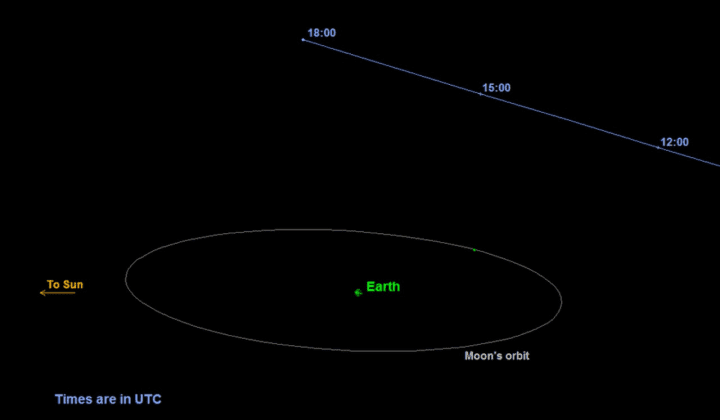The asteroid, named 2015 TB145, was discovered Oct. 10 by the University of Hawaii's Pan-STARRS-1 (Panoramic Survey Telescope and Rapid Response System) on Haleakala, Maui.
The asteroid will zip by a little over 300,000 miles from Earth at 10:05 p.m, which means it won't come anywhere close to crashing into your Halloween party.
Scientists are treating the flyby of the estimated 1,300-foot-wide (400-meter) asteroid as a science target of opportunity, allowing instruments on "spacecraft Earth" to scan it during the close pass.
According to the catalog of near-Earth objects (NEOs) kept by the Minor Planet Center, this is the closest currently known approach by an object this large until asteroid 1999 AN10, at about 2,600 feet approaches Earth in August 2027.
“The trajectory of 2015 TB145 is well understood," said Paul Chodas, manager of the Center for Near Earth Object Studies at NASA's Jet Propulsion Laboratory, Pasadena, California. "At the point of closest approach, it will be no closer than about 300,000 miles -- 480,000 kilometers or 1.3 lunar distances. Even though that is relatively close by celestial standards, it is expected to be fairly faint, so night-sky Earth observers would need at least a small telescope to view it."
The gravitational influence of the asteroid is so small it will have no detectable effect on the moon or anything here on Earth, including our planet's tides or tectonic plates.
More information about asteroids and near-Earth objects is at: http://neo.jpl.nasa.gov
Click here to follow Daily Voice White Plains and receive free news updates.


